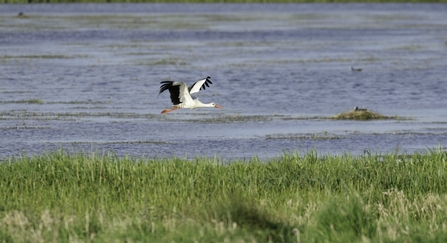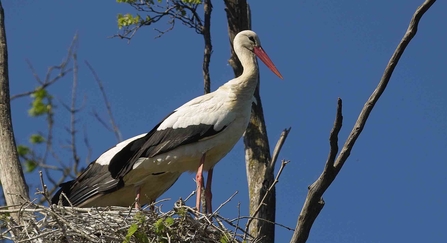What are white storks?
White storks are distinctive birds, standing over 3 feet tall with long, orange-red beaks and legs, black eyes and black wingtips. They can live for as many as 40 years, though their average life expectancy is between 20 and 35 years, and eat an omnivorous diet which includes small mammals, birds, amphibians and large insects.
White storks play a key role in wetland ecosystems, enhancing biodiversity and connecting different sites as they fly between, nesting in large, stand-alone trees. Up until the 15th century, white storks would have been seen across our county, perhaps favouring the wetlands around the River Trent but travelling right up our river systems and nesting near communities across Derbyshire and the UK.
Are white storks missing?
Unfortunately, a range of factors, including the loss of wetland and grassland habitats through industrialisation and widespread hunting, brought an end to breeding stork populations in the UK, with the last breeding pair recorded in 1416 on the roof of St Giles Cathedral in Edinburgh.
White storks can fly miles to find suitable habitats, but almost always return to where they hatched. This is why, while we have not had breeding Storks in the Midlands for over 600 years, you may still see them fly over when visiting from Europe, Africa, or, since 2020, from the successfully reintroduced population in Sussex.


